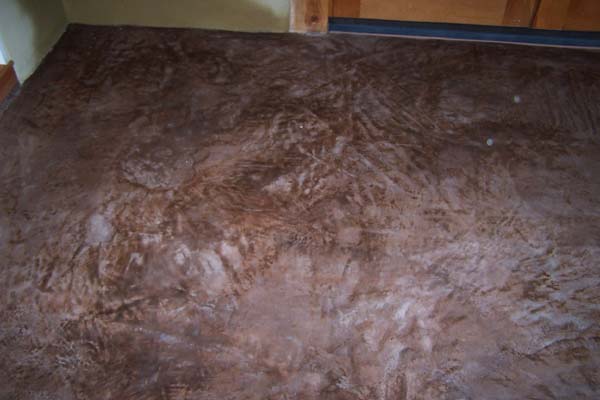A photo showing a close-up of the heavy brown pigment cement floor. The density of the brown pigment created a lovely mottled, marble-looking finish. Once the floor had dried sufficiently, a healthy wax with a variety of combined waxes (carbuna, bees, et cetera) was applied for added protection in this high traffic area of the small adobe home in Dixon, New Mexico.
This small adobe house which was built in perhaps the mid 1970’s had been slowly and lovingly restored by the current owner, now and again with our help. The small house comes in at perhaps just over 600 square feet, not counting a large enclosed old storage room. We began with adding radiant in-floor heating under the bedroom hard wood floors some years ago, and later were called in to work on the project shown here where the walls and flooring were cleared out and redone.
One efficient feature added to this room during floor upgrade, was the in-floor radiant heat we placed into the new cement floors. We often, when pouring either earthen or cement floors will encourage the home owners to consider putting in radiant floor tubing, which is economical and allows them to hook the flooring up to radiant floor heat in the future, if desired. One thing to note about cement floors verses earthen (also called poured adobe or mud) floors and it’s relationship to in-floor radiant floor heating is, cement floors seem to conduct heat a bit faster. Both floors work well with in-floor heat, which is an even, extremely comfortable heating system no matter how you look at it.



